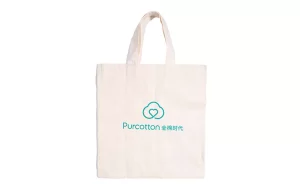Non woven bags have become a practical and eco-friendly alternative to disposable plastic bags. For businesses looking for non–woven bags wholesale price options, understanding how these bags are made helps in selecting the right supplier and product. At Winner Nonwovens, we focus on producing high-quality non-woven bags that are durable, reusable, and suitable for various applications.
Materials Used in Non Woven Bags
The production of non-woven bags starts with selecting the appropriate material. Most non-woven bags are made from polypropylene, a lightweight and strong thermoplastic polymer. Cotton-based non-woven fabrics are also used for environmentally conscious options. These fibers are chosen for their durability, flexibility, and suitability for multiple uses. Winner Nonwovens ensures that all materials used in our non-woven bags meet strict quality standards to provide long-lasting products.
The Non Woven Fabric Production Process
Non woven bags differ from traditional woven bags because their fibers are not interlaced. Instead, fibers are bonded together using heat, pressure, or chemical methods. This bonding process creates a strong and uniform fabric that can support heavy loads while remaining lightweight. At Winner Nonwovens, we focus on precision in the bonding process to ensure each bag maintains strength and shape even after repeated use.
Cutting and Shaping the Bags
Once the non-woven fabric is prepared, it is cut into the required sizes and shapes. This step determines the bag dimensions, handles, and overall design. The cutting process is precise to avoid wastage of materials and to ensure consistency across large orders. For businesses interested in non-woven bags wholesale price options, consistent cutting and quality control are essential for bulk orders.
Sealing and Finishing
After cutting, the bag parts are assembled using heat sealing, stitching, or ultrasonic welding. This process secures the handles, sides, and bottom of the bag, ensuring durability and load-bearing capacity. Finishing touches, such as printing logos or designs, can also be added at this stage. Winner Nonwovens produces non-woven bags that are strong, practical, and ready for immediate use in retail or promotional environments.
Advantages of Understanding the Production Process
Knowing how non-woven bags are made provides insights into their durability, usability, and cost. Businesses purchasing non-woven bags wholesale price options can make informed decisions based on bag thickness, material, and manufacturing quality. Understanding the process also helps buyers assess the reliability of the supplier and the environmental benefits of the bags.
Conclusion
Non woven bags are made through a careful process that starts with high-quality materials, followed by fiber bonding, cutting, shaping, and finishing. This production method results in durable, reusable bags suitable for retail, promotions, and everyday use. Winner Nonwovens, as a trusted non–woven bags manufacturer, offers non-woven bags at competitive wholesale prices without compromising quality. Understanding how these bags are made helps businesses select the right product for their needs while supporting practical and sustainable packaging solutions.











